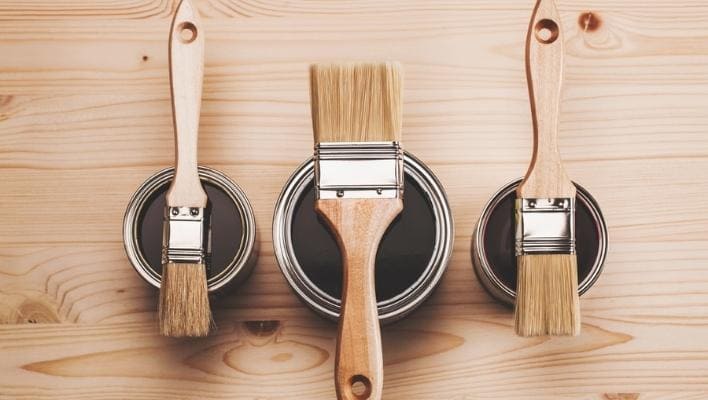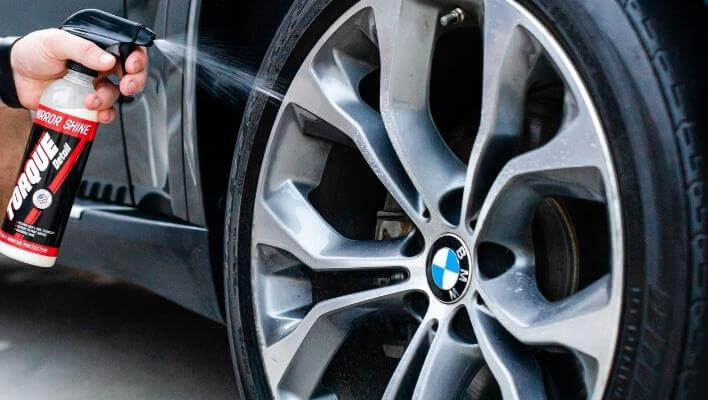Eggshell vs semi-gloss, which one to choose? Both offer high-quality paints with distinct advantages. As a contractor, I understand that selecting the right paint for your walls and ceilings becomes difficult. To help you make this choice effectively, let’s explore the differences between eggshell and semi-gloss paints, and I will also share my experience side-by-side.
The right choice will significantly impact your surfaces appearance, durability, and maintenance. So, without further due, let’s begin!

Table of Contents
- Semi-Gloss vs Eggshell (Quick Summary)
- Which Paint Finish is better eggshell or semi-gloss?
- 1. Appearance
- 2. Durability
- 3. Coverage
- 4. Maintenance
- 5. Ease of Use
- 6. Cost
- 7. Applications
- Low gloss and high gloss paints
- What is low gloss paint used for?
- What is high gloss paint used for?
- eggshell vs flat vs Semi-gloss Paint
- Types of Paint Finishes
- What paint finish do professionals use?
- Final Words
- Rosalie Sanchez
Semi-Gloss vs Eggshell (Quick Summary)
| Criteria | Semi-Gloss Paint | Eggshell Paint |
| Durability | More durable, withstands wear and tear, better at resisting stains, moisture-resistant. | Less durable than semi-gloss, prone to staining, dings, and scratches, not moisture-resistant |
| Coverage | Contains less pigment, may require multiple coats for full coverage. | Contains more pigment, better coverage potential with fewer coats. |
| Finish | Highly reflective, may require careful application to avoid streaks and inconsistencies. | Smooth finish if applied correctly, less likely to show streaks or imperfections. |
| Recommended Usage | Ideal for high-traffic areas like kitchens, bathrooms, and hallways. | Suitable for less busy areas like bedrooms and home offices. |
| Aesthetic Sheen | Has a higher sheen, which reflects more light and can give a shiny appearance. | Has a lower sheen, offering a subtle and more muted appearance. |
| Cleanability | Withstands continuous cleaning and scrubbing, but smudges and fingerprints may be more visible due to the higher sheen. | Easy to touch up and less likely to show blemishes or streaks. |
| Mildew Resistance | Provides better protection against mildew in high-ventilation areas. | Less effective at preventing mildew compared to semi-gloss. |
| Budget Consideration | Generally, semi-gloss paint may be slightly more expensive. | Often a budget-friendly option. |
Which Paint Finish is better eggshell or semi-gloss?
Semi-gloss and eggshell paints are good and popular in the paint industry. However, if you want to choose the right one for your projects, let’s determine their key difference to make an informed decision.
1. Appearance
The primary distinction in appearance between eggshell and semi-gloss paint lies in the sheen level. Eggshell paint gives a glossy effect. In comparison, semi-gloss gives a glossy look. So, it has a high sheen.
If you want to look at the two paint finishes from a distance, the semi-gloss surface glows more than the eggshell surface.
This is because semi-gloss paint reflects light while eggshell paint absorbs light. As you can see in the image below, this glossy feature of semi-gloss gives a smooth surface finish.
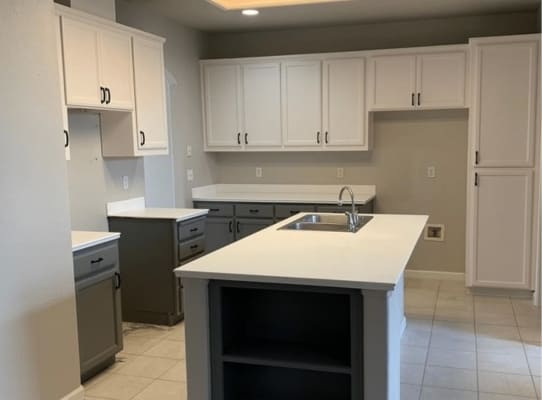
While eggshell paint does give a smooth finish, it is not as thin as semi-gloss.
2. Durability
Durability is the paint’s ability to retain its color. Here, semi-gloss wins. It has high levels of binders, making its surface strong, flexible, and resistant to common causes of damage like harsh weather, chemical spills and scrubbing.
Eggshell, in contrast, has a lower binder percentage. It is more durable than flat paint but not semi-gloss. I observed more staining, dents and scratches on its surface. And don’t try to scrub hard to remove any stain because you will regret it like me. Eggshell paint is not moisture-resistant.
Useful Resource: Discover additional information on the durability, coverage, and distinctions between Gloss and Satin Spray Paint in our comprehensive guide.
3. Coverage
Paint coverage is the rate at which paint spreads on the surface. Higher binder capacity means less pigment room and, therefore, less coverage. Therefore, eggshell paint offers excellent coverage even with a single coat. We recommend using eggshell paint where you want to hide imperfections on the walls and other surfaces like I did in my living room. Check out the picture below;

Note: Explore our guide on an easy method to paint eggshell over semi-gloss surfaces.
4. Maintenance
Semi-gloss paint doesn’t accumulate dirt quickly due to its durability. So, it requires less frequent cleaning. Also, it withstands vigorous scrubbing during cleaning and does not cause significant damage.
Semi-gloss is great for touch-ups. Repainted patches blend easily with the existing paint and have an appealing finish. So, semi-gloss is easy for maintenance.
5. Ease of Use
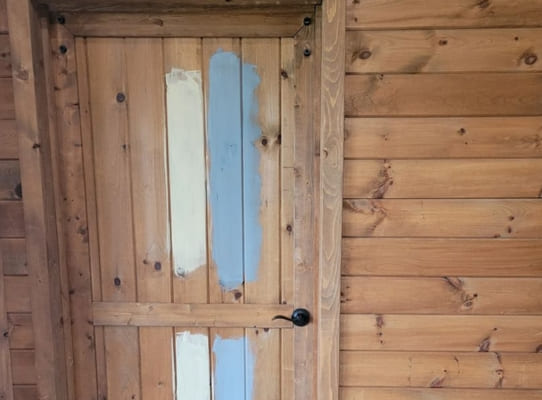
If I talk about the ease of application of both paints, Eggshell is easier due to the low binder amount. Its higher coverage index is also due to a lower binder percentage and low viscosity.
These factors conceal imperfections, such as streaks and flaws. So, you can use the typical W method technique of painting.
While applying semi-gloss, you need extra care and precision. Care should be taken when applying wet paint over dry surfaces as it can lead to inconsistencies. So, I try to paint quickly or use a paint sprayer to reduce overlaps.
Finally, I am not saying eggshell is the easiest paint overall. Rather, it is easy to apply as compared to semi-gloss.
6. Cost
Eggshell paint is cheaper than semi-gloss paint. If you’re working within a tight budget, eggshell paint is a suitable and cost-effective option.
On the other hand, semi gloss paint is more expensive due to its high durability and glossy surface. The cost difference becomes more evident for larger painting projects. So, do a cost-benefit analysis to determine which option is best for you!
7. Applications
Eggshell paint is mostly used on interior walls and low-traffic spaces. Its low-luster finish provides a soft radiance. The paint finish easily conceals imperfections.
Semi-gloss works well in high-moisture areas. This factor makes it a great choice for surfaces exposed to water or steam. Due to its glossy look, we often use paint on walls and flooring in settings with good lighting. These include museums, hospitals, educational institutions, and upscale hotels, where the reflective nature of the paint enhances the overall environment.
Low gloss and high gloss paints
Low gloss and high gloss paints are used for different things in and outside of homes. Let’s break down when to choose each:
What is low gloss paint used for?
- Low gloss or matte finishes are great for hiding flaws on your walls, like slight bumps or uneven textures.
- Choose low gloss paints for more decorative spaces like living rooms. They give a subtle and classy look.
- If you’re painting big walls or ceilings, go for low gloss paint. It reduces glare and doesn’t make the room too bright.
- If you want a classic or traditional look, low gloss finishes work well. They create a timeless and elegant atmosphere.
What is high gloss paint used for?
- High gloss paints are perfect for showcasing architectural details, trim, and molding. They make these elements stand out.
- High gloss finishes resist stains and are easy to clean. Use them in areas like kitchens and bathrooms where there’s more dirt or moisture.
- For a sleek and polished look in contemporary designs, go with high gloss paints. They add sophistication and make spaces feel vibrant.
- Glossy finishes reflect more light, making smaller rooms look larger and brighter. This is especially helpful in rooms with limited natural light.
eggshell vs flat vs Semi-gloss Paint
Let’s find out the basic difference between flat, eggshell and semi gloss paint. So here we go:
| Aspect | Flat | Eggshell | Semi-gloss |
| Appearance | Non-reflective, smooth | Soft, slight shine | Radiant, shiny |
| Light Reflection | Low | Moderate | High |
| Hides Imperfections | Very well | Well | Not as well |
| Ease of Cleaning | Harder | Moderate | Easiest |
| Durability | Lower | Moderate | High |
| Moisture Resistance | Low | Moderate | High |
| Best Used For | Ceilings,walls in living rooms | Walls in most rooms | Trim, doors, cabinets, bathrooms |
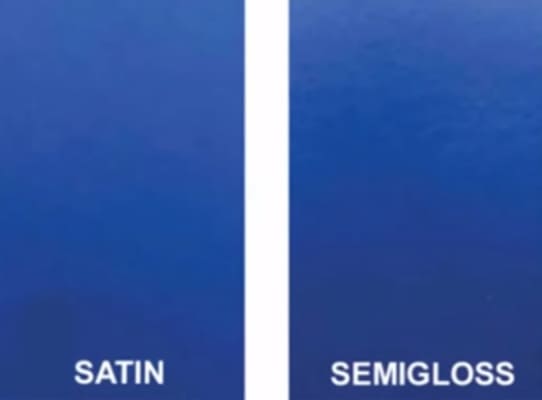
Update: Satin and semigloss paint differ in sheen level. Semi-Gloss paint gives a clearer impression of shiny surfaces than satin paint. It is also harder to wear and tear semi-gloss paint.
Types of Paint Finishes
| Finish Type | Description | Common Use | Ease of Touch-up |
| Gloss | A highly reflective, glossy sheen suitable for metalwork. For high-traffic areas. Known for high durability, clean-ability, and UV protection. | Ideal for metalwork, walls, cabinetry, trim, and furniture. | Challenging |
| Semi-gloss | Offers a lower light reflectance compared to gloss. Used in high-traffic areas. Boasts high durability, clean-ability, and UV protection. | Commonly used for kitchen and bathroom walls, hallways, children’s rooms, doors, and woodwork. | Challenging |
| Satin | Below semi-gloss in light reflectance. Slightly lower clean-ability than semi-gloss. | Applied on interior and exterior walls, body, and trim. | Challenging, depends on time. |
| Eggshell | Intended for interior use, providing a lower light reflectance. Offers a delicate appearance with slightly lower clean-ability, durability, and UV protection compared to satin. | Suited for interior walls with a preference for lower reflectance. | Easier |
| Flat | Provides the lowest light reflectance. Generally exhibits lower durability, clean-ability, and UV protection, though some products offer higher levels for interior use. | Often applied on exterior walls and interior ceilings. | Easy |
What paint finish do professionals use?
Professionals often use semi-gloss paint for woodworking details, doors, and high-traffic areas due to its noticeable gloss finish, durability, and ease of cleaning. On the other hand, eggshell is preferred for walls, while flat paint is commonly used for ceilings. Each finish serves specific purposes in creating a well-rounded and aesthetically pleasing paint job.
Final Words
In summary, the recommendation for choosing a paint finish comes down to personal preference and the requirements of different spaces. Eggshell finish is suggested for everyday areas, providing a rich, less reflective appearance that hides imperfections, while semi-gloss finish is ideal for trims and high-traffic areas due to its lustrous look, durability, and easy cleaning. Consider the specific needs of each space, aesthetic preferences, and desired durability when making your decision between eggshell and semi-gloss finishes.

Rosalie Sanchez
DIY enthusiast with years of experience in home decor and home improvement. With a passion for educating consumers about DIY projects. Every time, I work with our painting professionals to provide you with the best painting product reviews and how-to advice. You can follow me on Facebook.

